Wife of Union Colonel Robert Gould Shaw
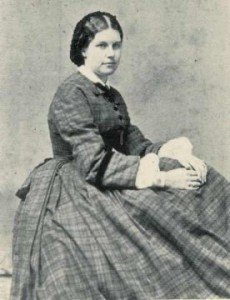 Annie Haggerty and Robert Gould Shaw met in 1861; they married in May 1863. Their time together was brief, but their letters sustained them through long separations while Robert served in the Union Army. Twenty six days after their wedding Colonel Shaw left to command the 54th Massachusetts Infantry, the first all-black regiment raised in the free states. Shaw is the principal subject of the 1989 film Glory, in which he is portrayed by Matthew Broderick. Annie is not depicted in the film.
Annie Haggerty and Robert Gould Shaw met in 1861; they married in May 1863. Their time together was brief, but their letters sustained them through long separations while Robert served in the Union Army. Twenty six days after their wedding Colonel Shaw left to command the 54th Massachusetts Infantry, the first all-black regiment raised in the free states. Shaw is the principal subject of the 1989 film Glory, in which he is portrayed by Matthew Broderick. Annie is not depicted in the film.
Annie Kneeland Haggerty was born July 9, 1835, in New York City to Ogden and Elizabeth Kneeland Haggerty. Annie’s father was a wealthy New York City auctioneer. Robert Gould Shaw was born in Boston October 10, 1837, the only son of wealthy parents, Francis and Sarah Sturgis Shaw, whose participation in abolitionist movement increased as the years passed and their friends included William Lloyd Garrison and Lydia Maria Child.
By 1842 the Shaws were working with the Boston Vigilance Committee to help runaway slaves gain their freedom. In 1846, the family moved to Staten Island so that Robert’s mother could be near the nation’s premier eye specialist because of her failing eyesight.
Robert entered Harvard College in August 1856, but left the school after completing his junior year in order to work for his uncle in his mercantile offices in New York City. During the summer of 1860, Shaw’s interest in politics peaked. Abraham Lincoln was elected President, which was soon followed by the secession of South Carolina and the threat of hostilities between the north and the south.
Annie Haggerty and Robert Gould Shaw met in 1861 when Shaw’s sister Susanna invited Annie to a small gathering of family and friends attending the opera. Robert and Annie kept up a steady correspondence while he was away fighting for the Union.
Shaw in the Civil War
So he would not be left behind if war broke out, Robert Gould Shaw joined the 7th Regiment of the New York State Militia. On April 15, 1861, Lincoln called for 75,000 men to defend the nation’s Capitol, and the 7th New York was one of the first to respond. Robert decided to stay in the army and became a second lieutenant in the 2nd Massachusetts Volunteer Infantry on May 11, 1861.
Shaw did not share the strong anti-slavery sentiments of his parents, but he was primed to take revenge on the South. To Shaw, the South was the agressor, and if it took the end of slavery to redeem the honor of America, he was willing to fight for that.
Shaw and his regiment took part in several battles with the 2nd Massachusetts. In October 1861, they were ordered to a place called Ball’s Bluff. By the time they got there, the Federal forces had been routed by a superior Confederate force. Shaw found several of his friends lying wounded. Among them was Oliver Wendell Holmes, Jr., who had a ball through his leg and one through his lungs but would survive the war.
On September 15, 1862, Shaw’s regiment participated in the Battle of Antietam as part of General George B. McClellan‘s army. Sometime while in camp at Sharpsburg, Maryland, Shaw proposed to Annie Haggerty by mail. Because Annie had requested that Shaw burn all of the letters she wrote to him, it is unknown what her immediate response was.
Shortly after Christmas 1862, Shaw visited Annie at the Haggerty farm in Lenox, Massachusetts, and they discussed their future together and Annie promised herself to him. Back in camp, he wrote his future wife: “I have thought a great deal of you – indeed almost all the time since I left Lenox – and of my visit to you, especially the last part of it.”
In January 1863, abolitionist Governor John Andrew of Massachusetts requested and received authorization from Secretary of War Edwin M. Stanton to organize an black regiment of volunteers to serve for three years. Massachusetts had a small black population, but within two months they had recruited 1,000 black men from throughout the Union who became part of the 54th Massachusetts Infantry Regiment, the first all-black regiment raised in the free states.
Governor Andrew elected to commission white officers with military experience and firm anti-slavery principles to lead the unit. On February 2, 1863, the Governor offered Robert Gould Shaw the opportunity to lead the 54th Regiment. Shaw’s immediate response was to decline the offer. However, after writing to Annie for advice and receiving an overwhelming letter from his mother, he agreed to accept the command.
In a February 1863 letter to Annie Haggerty, Shaw wrote:
You know how many eminent men consider a Negro army of the greatest importance to our country at this time. If it turns out to be so, how fully repaid the pioneers in the movement will be, for what they may have to go through….I feel convinced I shall never regret having taken this step, as far as I myself am concerned; for while I was undecided I felt ashamed of myself, as if I were cowardly.
On April 17, 1863, Shaw was made Colonel of the 54th, and would now have to navigate the turbulent forces of discrimination that existed within the Union Army. A few days later, Robert announced his engagement to Annie Haggerty. They decided to marry before the unit left Boston, knowing that he might never return from the war.
On May 2, 1863, Annie Haggerty married Robert Gould Shaw in New York City. They spent four glorious days at the Haggerty farm in Lenox before learning that Shaw would have to return to camp before the week was out. On May 9 they returned to the Boston area and lived in a boarding house near Camp Reedsville where the 54th was training.
By May 18, the regiment had reached its full complement of men and had received their regimental flags from Governor Andrew. Just prior to their departure to the south, they learned of the act recently passed by the Confederate Congress, whereby:
Every white person being a commissioned officer, or acting as such, who, during the present war shall command Negroes or mulattoes in arms against the Confederate States, or who shall voluntarily aid Negroes or mulattoes in any military enterprise, attack or conflict in such service, shall be deemed as inciting servile insurrection, and shall if captured be put to death or be otherwise punished at the discretion of the court.
At 9 o’clock on the morning of May 28, the 1,007 black soldiers and 37 white officers of the 54th Massachusetts strode through the streets of Boston on their way to the wharf. Twenty-five-year-old Colonel Robert Gould Shaw rode at the head of the column. Close behind marched the color bearers, followed by young black soldiers, handsomely clad in their new uniforms.
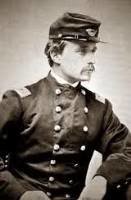
Image: Colonel Robert Gould Shaw
Twenty thousand people turned out to see Colonel Shaw and the regiment off. The grandson of Sojourner Truth had come from Battle Creek, Michigan, to join the 54th, and sons of Frederick Douglass, Lewis and Charles, had arrived with 50 men from western New York. Their families were present to bid them farewell.
Shaw’s proud family, including his mother, two of his four sisters and his wife Annie, stood on the second-floor balcony of the Sturgis home on 44 Beacon Street. When he arrived at their location, he looked up and raised his sword to his lips. His seventeen-year-old sister Ellen later wrote, “his face was as the face of an angel and I felt perfectly sure he would never come back.”
After the parade, the men said goodbye to their families, boarded their transport ship and headed for South Carolina. On June 3, the transport arrived at the port of Hilton Head. Shaw reported to General David Hunter, and the regiment were ordered to Beaufort.
At Beaufort, Shaw and his men met the black troops of the Second South Carolina, which had just returned from its raid up the Combahee River with Harriet Tubman acting as scout. Shaw also visited Charlotte Forten of Philadelphia, a black missionary teaching the newly freed slaves on Saint Helena, another of the Sea Islands.
On June 12 President Lincoln replaced General Hunter with General Quincy Gilmore. Concerned that his men might not see any real action and have the chance to prove themselves, Colonel Shaw wrote to General George Strong on July 6 and asked that the 54th Massachusetts be placed under his command. This occurred a few days later.
On July 8, 1863, the 54th was ordered to prepare to leave at an hour’s notice, and to take only blankets, cold rations and battle equipment. The regiment participated in their first major engagement at James Island, South Carolina. Early on the morning of July 16, four companies of the 54th Massachusetts were on picket alongside members of the 10th Connecticut.
As the morning haze began to burn away, the picket line was attacked by a force of Confederates. The 54th held their ground, allowing the 10th Connecticut to retreat to the rear without heavy injury. The 54th had performed admirably and proved that black troops would fight.
Before Union forces could capture Charleston, South Carolina, they first had to take Fort Wagner, a Confederate stronghold on Morris Island guarding the entrance to Charleston harbor. But capturing the fort would be no easy task. At first glance, it appeared to be little more than a series of irregular, low sand hills, but it was much more formidable than that.
A timber and sandbag foundation beneath the sand-covered hills allowed the structure to absorb artillery fire without any significant damage. The fort had 11 heavy guns mounted in fixed positions behind the parapets, while smaller wheeled cannon could be quickly repositioned where needed.
On July 17, 1863, the 54th Massachusetts began a two day excursion with only the hardtack in their packs for food. Marching through mud flats and marsh, through thunderstorms and in the blazing sun, with the aid of two transports they made it to Morris Island on the afternoon of Saturday, July 18, 1863.
Shaw met with General Strong and learned that there would be a frontal assault on Fort Wagner that night. Before joining his men, Shaw located Edward L. Pierce, a correspondent for the New York Daily Tribune and gave him some letters and personal items to pass on to Shaw’s family if he was killed.
Fort Wagner sat in the middle of Morris Island’s northern sandy peninsula with four batteries at the island’s northern tip. The only possible assault approach was east of the fort, along a slim stretch of sand, narrow even at low tide. Shaw and his troops would have to launch their attack from there.
Colonel Shaw readied his men on the beach. Tightly wedged together, elbow to elbow, the 54th began their gallant rush, determined to disprove the popular belief among whites that African Americans were an inferior race, lacking the courage and intelligence of combat-ready soldiers.
After a two-hour march up the island, they joined General Gillmore, who gave the 54th the lead position in the attack on Fort Wagner that evening. The Union artillery had bombarded the fort uninterrupted for over 24 hours, and General Gilmore was quite confident that it had been weakened enough to be taken by frontal assault. Unfortunately his assumptions were terribly wrong.
The assault would begin at dusk. Six Hundred soldiers from the 54th Regiment gathered less than 1,000 yards from the fort and waited. The 54th would lead the first wave while white troops would follow in a second wave. What none of the men could have known at that time is the Union bombardment of the fort had been ineffective and its garrison of 1,700 Confederate soldiers would still be fighting at full strength.
At about 7:45 pm, Colonel Shaw stood at the front of his regiment and gave the command to advance at the quick-step. The men had their bayonets fixed and they knew the fort must be taken in hand-to-hand combat. The 54th moved along a narrow strip of beach and Shaw ordered the pace to double-quick while still some distance away.
When about one hundred yards from the fort, the Rebel musketry opened fire with such terrible force that for a moment, the first battalion hesitated. Shaw yelled “Forward 54th!” and with another cheer and a shout, the men rushed forward and gained the parapet on the right. Shaw was one of the first to scale the walls. He stood briefly on the parapet, and while urging his men on, was shot through the heart and fell forward into the fort.
When the sun rose the following morning, it shone on the bodies of black and white soldiers laying sprawled on Wagner’s slopes and for three-quarter’s of a mile along the sandy beach. Of the 600 members of The 54th Massachusetts that led the first wave of the assault on Fort Wagner, nearly half made their way into the fort.
Two hundred seventy two were either killed, wounded or captured. The charge had proven the courage of black troops under fire and the bravery of their officers. A Confederate officer named Iredell Jones could not help but proclaim, “the Negroes fought gallantly, and were headed by as brave a colonel as ever lived.”
The men of the 54th fought gallantly for about an hour until Confederate guns forced them to abandon their position. Subsequent waves of Federal troops tried for two hours to take the fort but failed. Fort Wagner was never taken by direct assault and would only be evacuated by the Rebels on September 6, 1863, after a long, drawn out siege.
Following the battle, a flag of truce sent by the Federals was refused, and all attempts to regain the bodies of those who had been killed were denied. To dishonor him, Shaw’s body was thrown in the bottom of a large pit, and the bodies of his African American enlisted men were piled on top of him.
The Shaw family, Annie included, issued a statement that they did not want Shaw’s body moved. They requested that Shaw remain where he was…with his men. The attempt by the Confederates to discredit the memory of the young Colonel only served to make him a martyr. Poems and books would proclaim him and his men as the heroes that they were.
From a military standpoint, the assault on Fort Wagner proved to be a costly failure. The blame rested on the shoulders of Generals Quincy Gillmore and Truman Seymour, who had not ordered the usual preparations for such an assault – no one sent out guides to check the terrain in advance or dispatched lines of skirmishers to soften the enemy. Nor had the 54th ever trained for storming a fort.
Nevertheless, the assault proved to be a turning point for black soldiers, serving to dismiss any lingering skepticism among whites about the combat readiness of African Americans. General Ulysses S. Grant wrote to President Lincoln in August: “I have given the subject of arming the Negro my hearty support. They will make good soldiers and taking them from the enemy weakens him in the same proportion they strengthen us.”
When other Union generals remained recalcitrant, Lincoln responded:
You say you will not fight to free Negroes. Some of them seem to be willing to fight for you. When victory is won, there will be some black men who can remember that, with silent tongue and clenched teeth, and steady eye and well-poised bayonet, they have helped mankind on to this great consummation. I fear, however, that there will also be some white ones, unable to forget that with malignant heart and deceitful speech, they strove to hinder it.
Annie Shaw was a widow at age 28 when Colonel Shaw was killed at Fort Wagner on Morris Island, South Carolina. And she became a living symbol of her husband’s sacrifice when, nine months after his death, she stood on Broadway as New York’s first African American regiment marched off to war.
Annie lived the remainder of her life as a widow, somehow content in knowing that she had been briefly married to the young colonel who gave his life for his country. She lived in France and Switzerland with her aging mother and her younger sister’s family, but eventually returned to the United States and kept up a sporadic correspondence with her sister-in-law, Josephine Shaw Lowell.
At middle-age Annie became an invalid, and spent the last summer of her life in her old family home in Lenox.
Annie Haggerty Shaw died March 17, 1907 at her sister’s home in Boston at the age of 71. She was buried in the Church On the Hill Cemetery in Lenox, Massachusetts next to her mother, sister and brother-in-law.
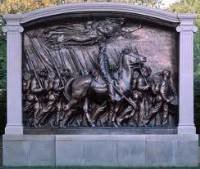
Image: The Shaw Memorial in Boston
Annie Haggerty Shaw died without ever seeing the Shaw Memorial on Boston Common. What many consider to be the greatest public sculpture in the United States, the high-relief bronze monument honors Colonel Robert Gould Shaw and the African American soldiers of the 54th Massachusetts Regiment. It took sculptor Augustus Saint-Gaudens almost 14 years to complete.
SOURCES
Wikipedia: Robert Gould Shaw
Civil War Trust: Robert Gould Shaw
Robert Gould Shaw and the 54th Regiment

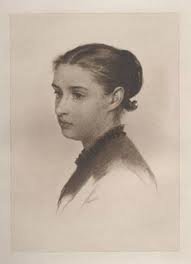
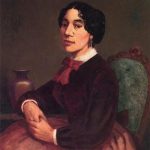
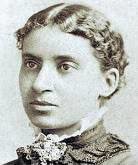
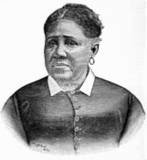
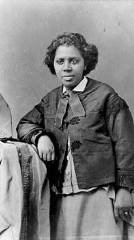
When I first saw the movie, I loved it it was so touching and inspirational I had 2 do my homework more deeper, I read and saw the real peoples, who was portraying the actors, loved it still watch it til this day, my daughter, last name is Shaw, when she got real ill, with the bird flu she had A PARANORMAL DREAM AND EXPERIENCE WITH MR. ROBERT GOULD SHAW AND HIS MEN THE 54TH REGIMEN WHO HE WAS BURIED WITH, HE TOLD HER SHE WILL B FINE! AND SHE RECOVERD QUICKILY AFTER HE TOLD HER THIS” SHAW WAS A GOOD SOUL SO WAS HIS MEN THEY ALL BONDED, AND BECAME CLOSE” I RESPECT THEM ALL 4 THEY BRAVERY AND COURAGE AND THEYRE GOOD HEARTS”
Nicely written article – well done! A minor note of correction to the following line:
“On May 9 they returned to the Boston area and lived in a boarding house near Camp Reedsville where the 54th was training.” Should be “near Camp Meigs in Readville, MA (now part of Hyde Park).” Thank you for this informative article.
David Hencke
Cpt, Commanding, Co A/54th Mass Vol Inf Regt
I own historic portraits of Col. Robert Gould Shaw and his wife Annie Hagerty Shaw.
I will forward the images upon request.
William Russell Shaw